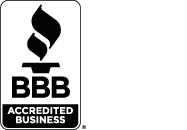How to save money on car depreciation
Cars are terrible investments. In their most basic form, they are merely a tool to get us from A to B. In their most elaborate form they can be a “shiny” tool that gets us from A to B, but with more luxuries. But either way, they are not likely to be much of a financial benefit. Everyone has heard that a brand new car goes down hundreds or even thousands of dollars the minute you drive it off the dealer’s lot.
This is just the beginning. Over the first year some cars depreciate at a rate as high as 35%. KBB.com says that the average car loses 65% of its value in the first 5 years. Add on maintenance, repairs, interest on the loan, and insurance and you can quickly see that automobiles can have quite a large negative effect on our finances. We dump all this money into our cars and what do we have to show for it? An asset that just continues to go down in value and still becomes LESS reliable. So, if we are not likely to benefit financially from our cars, how can we minimize the damage?
Minimize depreciation loss by buying used cars
I have always heard (and I agree) that a two year old car is a good age to buy, because you are still getting a fairly new car that is likely to have some amount of manufacturer warranty remaining, but yet a huge chunk of depreciation is knocked off.
SafeCarGuide.com says, “A stabilized rate of depreciation (7% – 12% per year) makes used cars a better value than new ones. New vehicles lose an average of 20% of their value the instant they are driven away from the dealership. When coupled to the average yearly depreciation of 7% to 12%, your first year’s loss is anywhere from 25% to 35%. That translates to a first year $6,000 to $8,000 loss on a $22,500 new vehicle, or a $10,000 to $15,000 loss on a $40,000 one. And that’s for a vehicle only driven the average 13,500 miles. If you drive more than that, your depreciation will be greater (35% to 50% for the first year).”
A good way to find a reliable used cars is by checking Consumer reports. They are a Not-For-Profit organization that reviews thousands of products to help consumers get the most for their money. They have a very thorough and detailed list about the reliability of various different makes and model. Since they do no advertising (which helps them stay unbiased) they do charge for the service. They offer a one-month online subscription for $6.00 and a one year for $26.00. If you are in the market for a car, this would be a few bucks well spent.
If you buy a new car, plan on keeping it for a long time If you do buy new, plan on keeping it a long time. This is one of the best ways to get your money’s worth out of a new car. On the other hand buying a new car and trading in the “old” one every two years is one of the worst financial moves you can make. This seems to be what many Americans are doing these days as they try to keep up with the Joneses. As mentioned earlier, it is the first two years in the life of a car that are the most expensive. So why would you want to own the car only on the most expensive years?
One of the advantages of buying new is being able to break the car in properly and having the assurance that you know how the car was cared for all of its life. If you take care of your car and stay on top of your car maintenance, many cars these days can last 200,000 miles. I recently drove past a Toyota dealership that had an old Corolla that had been driven over 500,000 miles. I need to get hold of the owner and find out what he did to keep it running that long. I will let you know 🙂
Feel free to leave me some comments and let me know how you save money on your cars…




